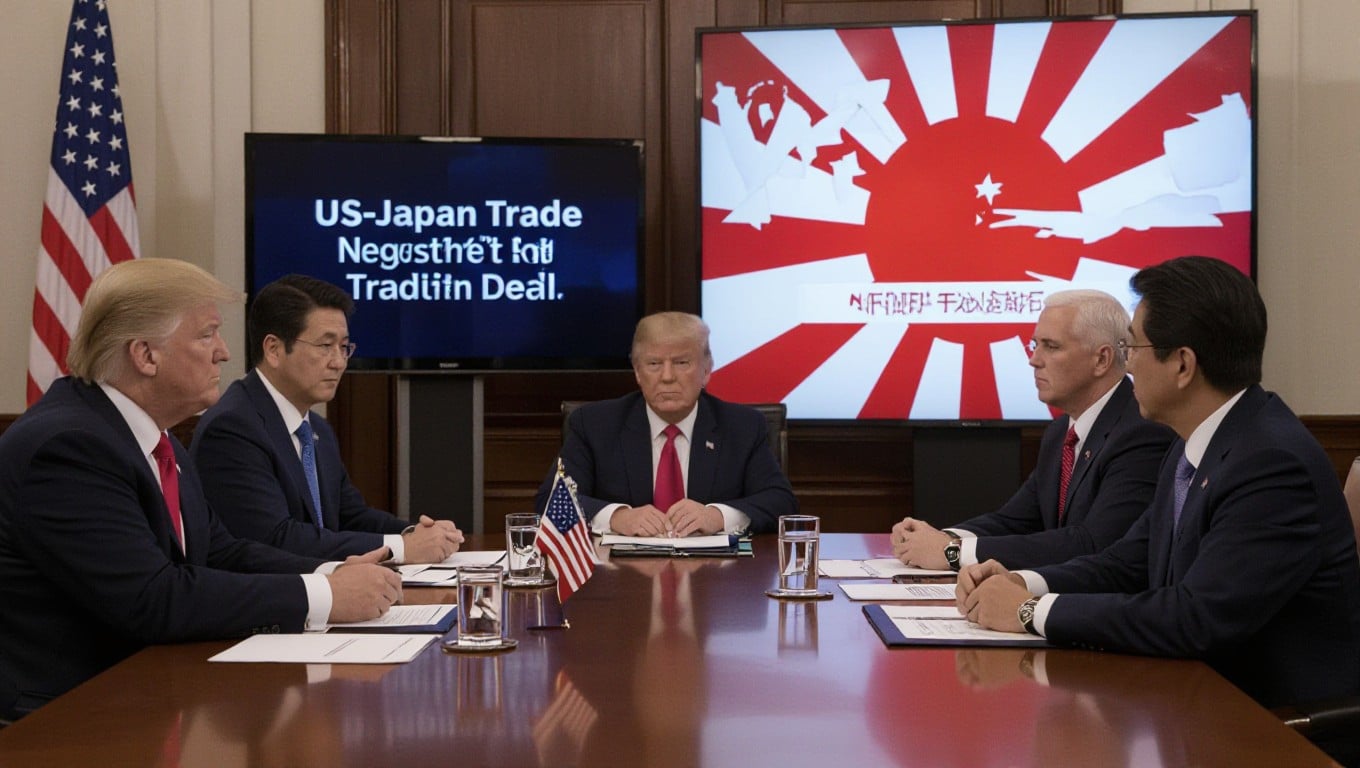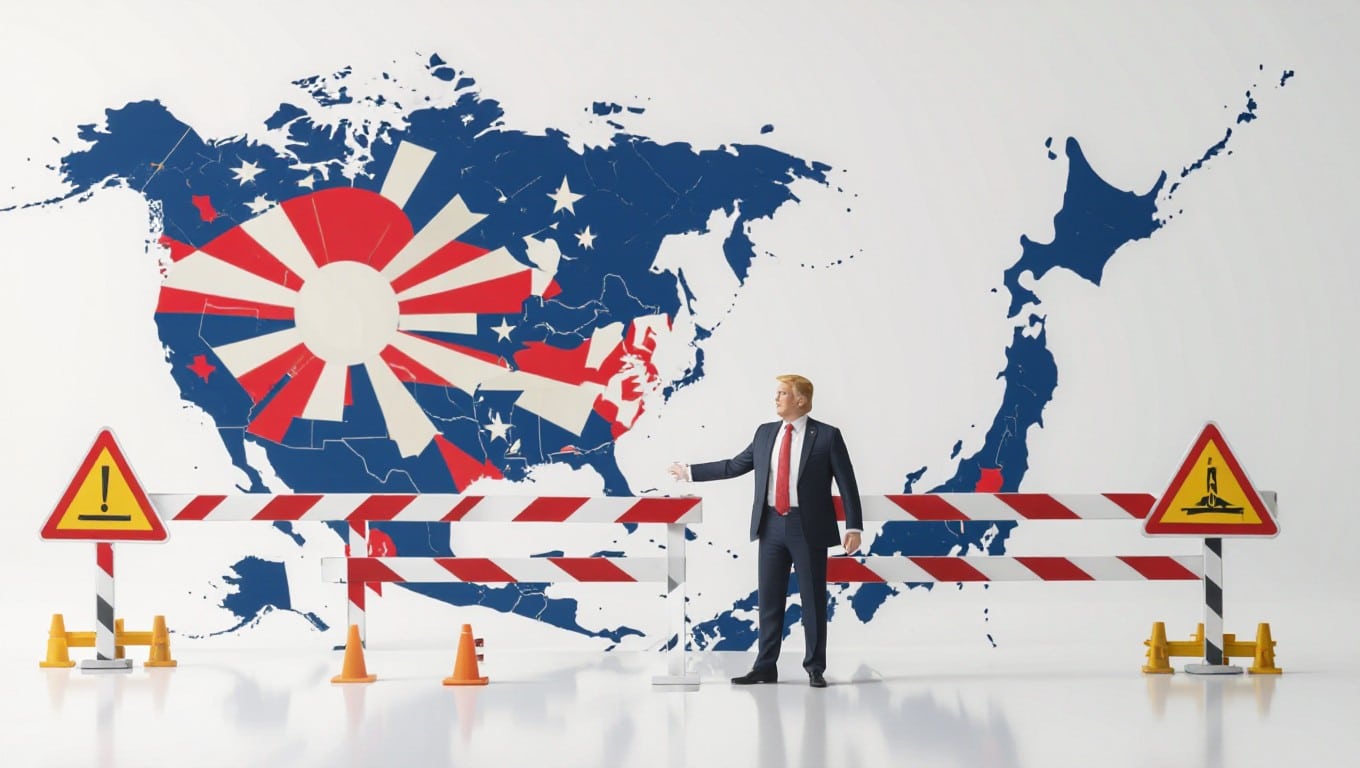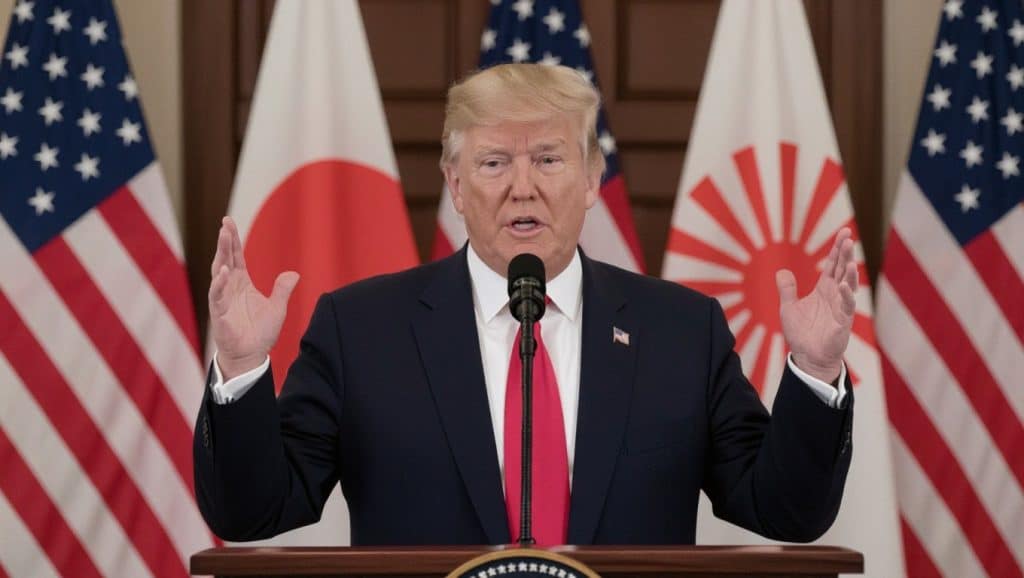You need to understand the growing tension between the US and Japan as trade talks face significant hurdles. President Trump has expressed doubt about reaching a deal, accusing Japan of being “spoiled” by decades of unfair trade practices and threatening to impose tariffs as high as 30-35% on Japanese goods, including cars and rice. While Japan remains a key ally, the future of your interests in this relationship depends on how these negotiations unfold amid Trump’s firm stance on tariffs and trade terms.
The Context of Trade Tensions
You’ve seen how US-Japan trade relations are strained by a mix of longstanding grievances and recent policy moves. Despite Japan’s significant imports of American rice and cars, President Trump insists they refuse these products, a stance fueling tariff threats. With the July 9 deadline for the tariff pause looming, both sides are navigating a complex impasse—Japan presses for relief on auto tariffs, while the US holds firm on imposing steep levies that could reach above 30%. These tensions reflect deeper challenges in achieving a balanced deal amidst decades of perceived trade imbalances.
Historical Relations Between the U.S. and Japan
Your understanding of today’s trade spat gains depth when you consider how the US and Japan have been interlinked economically and strategically since World War II. Japan emerged as a key American ally in East Asia, benefiting from open markets and technology exchanges. Yet over the past 30-40 years, trade frictions simmered around automotive exports and agricultural imports, feeding narratives of unfair competition that now underpin Trump’s “spoiled” criticism.
Trump’s Tariff Strategy and Its Implications
Trump’s use of tariffs functions as both leverage and a blunt instrument—he demands sweeping changes by threatening or imposing significant tariffs, like the current 24% on Japanese exports and the 25% on cars. This approach pressures allies like Japan to accept terms under duress, but risks deepening trade rifts and disrupting supply chains. By refusing to extend the tariff pause past July 9, Trump signals readiness to escalate tensions without a clear path to compromise.

Trump’s Claims and the Reality of U.S.-Japan Trade
Donald Trump’s assertions about Japan’s refusal to buy American rice and cars contrast sharply with available data. While he suggests Japan deliberately avoids these imports, the figures tell a different story: Japan remains a consistent purchaser of U.S. agricultural products and automobiles. These statements appear aimed at justifying potential tariffs, but the economic relationship is more nuanced, with Japan actively engaged in significant trade despite ongoing tensions and stalled negotiations over tarif rates.
Analyzing Trump’s Accusations on Rice and Automobiles
Trump’s claim that Japan “won’t take rice” ignores that Japan imported $298 million worth of U.S. rice last year and $114 million in the first four months of the current year. Similarly, his statement about “not giving them one car in 10 years” is contradicted by the import of 16,707 American vehicles in 2018 alone. These discrepancies suggest that the accusations serve more as leverage in trade talks than as an accurate reflection of trade flows.
Fact-Checking Key Trade Figures
Trade data from credible sources like the US Census Bureau and Japan Automobile Importers Association show ongoing and sizable imports of U.S. rice and cars by Japan. These figures undermine claims of Japan’s outright rejection of American goods and highlight the complexity behind the negotiation deadlock, where tariffs and market access remain thorny issues rather than simple refusals of trade.
Delving deeper, the $298 million rice import figure reflects sustained demand for American agricultural products despite tariffs and political rhetoric. U.S. rice exports constitute a meaningful share of Japan’s imports in this category, illustrating Japan’s continued reliance on these goods. On automobiles, the 16,707-unit figure encompasses a range of models and indicates steady, though not dominant, American presence in the Japanese market. These numbers provide concrete evidence that trade continues despite strained diplomatic ties and tariff disputes, emphasizing that negotiations hinge on tariff rates and market fairness rather than absence of trade.
The Stakes for Japan and the U.S.
The upcoming decisions on tariffs and trade negotiations carry significant consequences for both Japan and the United States. Japan’s economy, heavily reliant on automotive exports, faces increasing barriers that could disrupt its growth. Meanwhile, the U.S. risks straining a key security alliance and destabilizing supply chains. With tensions rising over claims like rice and car imports, the battle lines are drawn not just on trade figures but also on long-term diplomatic and economic relations that affect your investments and market stability.
Economic Impact of Tariffs on Both Nations
Your exposure to rising tariffs means higher costs for goods and potential retaliation that could suppress exports. Japan’s $16.7 billion auto export sector faces a stiff 25% U.S. tariff, while American farmers and manufacturers confront limited access to Japanese markets. These measures can trigger price volatility, disrupt industries, and reduce consumer choice on both sides, creating economic ripple effects that might influence your portfolio and purchasing power.
Strategic Importance of the U.S.-Japan Alliance
The alliance remains a linchpin in East Asian security, balancing rising regional threats while fostering economic cooperation. Despite trade disputes, your national security and regional stability benefit from Japan’s strategic role in joint defense initiatives and intelligence sharing. Any disruption to this relationship risks emboldening adversaries and complicating your geopolitical position in the Asia-Pacific.

Ongoing Negotiations and Their Challenges
Negotiations between the US and Japan continue without clear progress as the July 9 deadline for the tariff pause approaches. Despite multiple high-level discussions and diplomatic exchanges, unresolved issues—especially around tariffs on automobiles and agricultural products—remain significant barriers. You’re witnessing a standoff where the US demands concessions tied to longstanding trade grievances, while Japan is reluctant to accept steep tariff increases or reduce its protections. Both sides are engaged in a delicate balancing act, trying to protect key economic interests while avoiding a full breakdown in trade relations.
Recent Meetings and Diplomatic Efforts
Recent diplomatic activity has included Japanese Foreign Minister Takeshi Iwaya’s Washington visit for a Quad meeting and Japan’s tariff negotiator Ryosei Akazawa’s seventh trip to the US. In mid-June, Prime Minister Shigeru Ishiba met President Trump at the G7 summit, aiming to revive stalled talks. Despite these efforts, talks have yet to break the deadlock, with both sides reaffirming commitment to ongoing discussions but showing little flexibility on core issues like automobile tariffs and market access.
Obstacles Hindering a Trade Deal
Automobile tariffs, agricultural market access, and mutual distrust stand at the heart of the impasse. The US insists on maintaining a 25% tariff on Japanese cars, a blow to Japan’s automotive exports. Meanwhile, Japan refuses sharp increases or demands that would undermine its domestic industries. Misleading claims and rhetoric, such as disputes over American rice and car purchases, have further complicated trust, making compromise harder to achieve as tariff deadlines loom.
Digging deeper, the core obstacle is the US’s insistence on reciprocal tariffs as leverage to force concessions, particularly regarding Japan’s car exports which represent a vital sector worth billions annually. Japan’s domestic politics and agricultural sensitivities restrict how much it can open its markets, especially for products like rice, despite actual trade volumes contradicting some US claims. This mix of economic stakes, political pressures, and misperceptions creates a complex environment where every negotiation step risks escalating tensions instead of resolving them.
Perspectives from Economic Experts
Economic analysts highlight that the deteriorating trade talks between the US and Japan reflect broader tensions fueled by Trump’s aggressive tariff policies and contentious rhetoric. While some experts flag the risk of prolonged tariffs disrupting supply chains—especially in the automotive sector where Japan faces a 25% US tariff—others note that Japan’s steadfast purchasing of US rice and automobiles contradicts the administration’s narrative. These mixed signals suggest a volatile environment where strategic economic interests clash with political posturing, leaving you to navigate uncertain market impacts as the July 9 deadline looms.
Forecasts on Possible Outcomes
Forecasters warn that without compromise, tariffs could escalate to 30-35% on key Japanese exports, severely affecting bilateral trade volumes. Some project a potential trade freeze with “certain countries” as Trump hinted, which could widen supply chain disruptions beyond just automobiles and agriculture. Conversely, a limited deal could emerge if Japan agrees to concessions on car imports, but analysts caution that such an agreement seems remote given the current stalemate and the administration’s firm stance against extending tariff pauses.
Expert Opinions on Future Relations
Specialists emphasize that even if a trade deal stalls, the security alliance between the US and Japan is likely to endure, though economic relations may cool. The ongoing negotiation difficulties underscore a growing strain where economic protectionism complicates diplomatic ties. Experts suggest you should prepare for a tougher trade environment, while keeping an eye on diplomatic channels like the Quad meetings, which continue to offer platforms for collaboration despite economic disagreements.
Delving deeper, experts point out that Japan’s commitment to “sincere and honest discussions,” as stated by Deputy Chief Cabinet Secretary Kazuhiko Aoki, signals a desire to preserve long-term relations despite current tensions. They note that Japan balances economic pragmatism with strategic alliance priorities, especially given US demands in East Asia. Japan’s resistance to large tariff increases on autos and its record of US imports highlight a nuanced position: you can expect Japan to remain engaged but cautious, leveraging diplomatic and economic tools to mitigate the risk of escalating trade conflicts impacting both nations’ markets.
Final Words
Conclusively, you should understand that US-Japan trade negotiations remain tense, with President Trump warning that Japan’s longstanding trade practices may prevent a deal. Despite Japan’s efforts and ongoing talks, tariffs—especially on cars—remain a major sticking point. If you follow these developments, be aware that the US is firm on terms and unlikely to extend tariff pauses. This means your business or investment decisions involving US-Japan trade should factor in potential ongoing tariffs and uncertainty in reaching an agreement.

